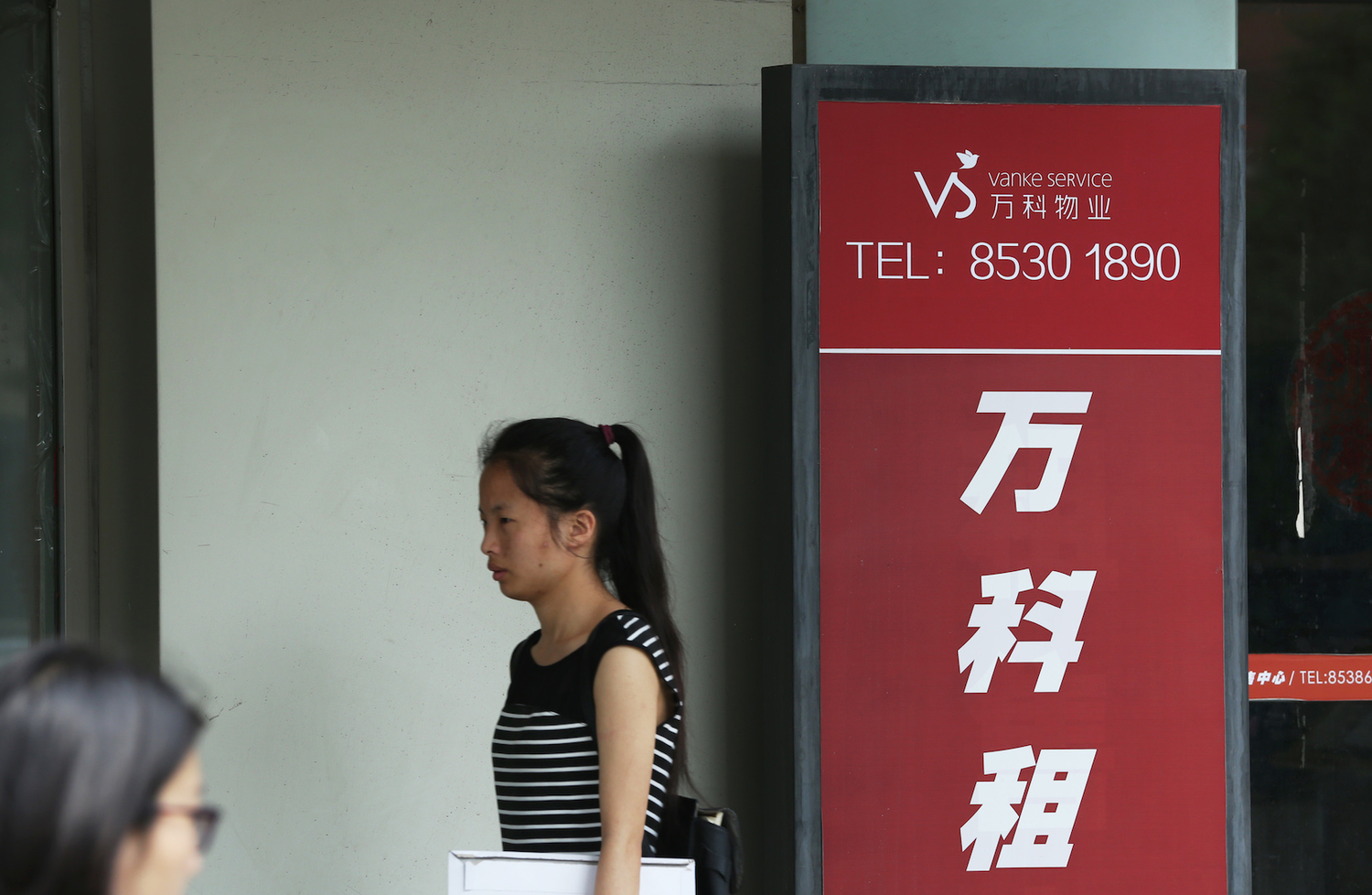An intense battle for control of China’s largest, publicly traded developer China Vanke Co. has exposed flaws in the nation’s financial supervision system that demand urgent attention.
Vanke management and Baoneng Group, a property and insurance conglomerate, have been battling since July 2015 over stock purchases through which Baoneng rose to become Vanke’s largest shareholder.
Against management’s wishes, Baoneng over the course of several months gradually raised its stake to more than 25 percent. Vanke countered by suspending the trading of all its shares on the Shenzhen Stock Exchange—a suspension that began last December and ended in early July.
Vanke management put more pressure on Baoneng July 19 by asking the stock exchange and the China Securities Regulatory Commission (C.S.R.C.) to investigate the stakeholder’s insurance subsidiary Shenzhen Jushenghua Co. for allegedly breaking securities laws and failing to meet information disclosure requirements.
The bitter controversy has focused on Baoneng’s funding arrangement. Many want to know exactly where the money has been coming from, but so far neither Baoneng nor government regulators have straightforwardly revealed Baoneng’s funding course.
Baoneng apparently used a complex financing mechanism that included high-interest-rate borrowing. Knowledgeable sources told Caixin that separate investigations by the C.S.R.C., China Banking Regulatory Commission (C.B.R.C.) and China Insurance Regulatory Commission (C.I.R.C.) found no irregularities tied to Baoneng’s means of fundraising. But market players and analysts have expressed skepticism.
The Vanke-Baoneng saga has underscored the need to reform financial system supervision in the face of increasingly complex and risky fundraising strategies.
China’s current supervisory framework divides tasks among the central bank, C.S.R.C., C.B.R.C., C.I.R.C. and other agencies. But the system has been losing its effectiveness against the backdrop of increasingly interconnected financial services, products and related businesses. Indeed, it could be argued that China’s traditional, fragmented regulatory framework has now become too weak for such a heavy load of responsibility.
Some experts have sharply criticized the supervision framework, arguing that it actually compounds risks and, whenever a problem surfaces, lets officials at one agency pass the buck to their counterparts at another.
The framework’s key problem is a lack of information sharing and coordination, especially among C.S.R.C., C.B.R.C. and C.I.R.C. officials. Another weakness is that the framework’s laws and regulations are fragmented, challenging each agency’s ability to enforce the rules.
What’s needed is a mechanism that encourages supervisory bodies to make decisions and plot out implementation steps based on consensus. Until that mechanism is in place, however, the combined effects of weak coordination, redundancies and regulatory gaps will continue bogging down the system.
Today, each supervisory agency is obsessed with guarding its oversight “territory,” and exerting its authority within that territory’s boundaries. It’s thus natural for resistance to flare whenever an outsider tries to intervene or reforms are proposed that threaten to undermine an agency’s power. And while protecting territory, a supervisor may become intentionally blind to some risks and simply unaware of others.
China’s 2015 stock market selloff shed light on the supervisory system’s failures, including its inability to adequately monitor risks associated with margin trading, peer-to-peer lending websites, and the stock-buying spree that triggered the Vanke-Baoneng controversy.
Policymakers have already come to realize the huge risks associated with the current framework of financial supervision. Thus, a reform plan has been high on the central government’s agenda since late 2015. Moreover, an urgent call for reform was included in the government’s 13th Five-Year Plan for the period that began this year.
The market responded cheerfully to the initial reform signals from Beijing. Since then, the reform campaign has fallen short of expectations. Moods can rise again, though, if the promised reforms are implemented and put into practice.
Changing the supervisory framework will undoubtedly be difficult and costly. To do the job properly, the government will need legislation with a clear focus that spells out well-defined responsibilities and puts the right people in charge.
Further delays to the reform process will increase risk, especially since China’s economy is continuing to decelerate. Government officials must now choose whether to retain the traditional, fragmented supervisory framework or actively reform the system to suit the market climate.
Officials and scholars are still debating the future of financial regulation. Some support a unified monetary and financial system supervisory body that gives the leading role to the central bank. Others favor a system that relies on several agencies with specific duties. A robust discussion of all options, pros and cons should be encouraged. But even more important is that the discussion lead to a firm decision, as soon as possible.
The first step toward decisive reform, regardless of which plan is chosen for future oversight, should lead to a cross-market supervisory system. For instance, unified oversight by the central bank of short—and medium—term bank notes, corporate bonds and enterprise bonds would close the current loopholes that have been caused by fragmented supervision. Trading in these products is currently monitored by the National Association of Financial Market Institutional Investors, C.S.R.C. and the National Development and Reform Commission.
Some have argued that it would be more cost-effective to improve cross-agency coordination rather than implement wide-ranging reforms of the supervision system. But that kind of change has been tried and failed before. Systemic risks have mounted as the financial industry becomes more complex.
Some of the world’s major economies reformed their financial supervision systems after the 2008 global financial crisis. None found a panacea. But their experiences point to the importance of risk prevention from a macroeconomic perspective, and the need to coordinate prudent macroeconomic management with monetary policies and cross-market supervision.
Resolving the Vanke-Baoneng controversy will require cross-sector coordination as part of an improved framework for financial supervision. And the saga itself should serve as a wake-up call for reform against the backdrop of an increasingly risky investment climate. Reforming the system can no longer wait.




